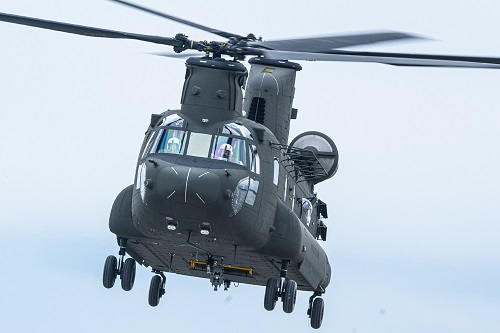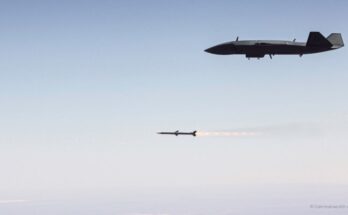
Contract awards are continuing to pile up for Boeing and the U.S. Army’s CH-47 Block II Chinook program, proving the service’s commitment to the modernized variant. In late September, the Army announced plans to “rapidly field” the Block II for two Combat Aviation Brigades (CABs) using a combination of FY25, FY26, and previously approved funding. Estimates suggest the effort will procure some two dozen examples to outfit the CABs.
While the U.S. government shutdown stalled Defense Department award announcements over the past several weeks, the reopening has revealed several related program developments during that timeframe. On October 21, Boeing reported a $461 million award for Lot 4 and 5 production for nine CH-47F Block IIs.
The following week, Boeing received a $876.4 million contract for up to 60 Block II Chinooks for Germany with allocations from the country’s FY26 case funds. Finally, on November 20, the U.S. Special Operations Command awarded Boeing a $271.7 million contract to build five MH-47G helicopters.
With over $1.6 billion in agreements since October, Boeing’s H-47 production facility near Philadelphia has earned a significant boost to an already growing order book. Chinook manufacturing could expand well into the mid-2030s to support both domestic and international customers, with additional interest on the horizon.
Building on the capabilities of its Block I predecessor, the Block II features a modernized drivetrain, upgraded rotor system, a redesigned fuel system, and a common avionics architecture system (CAAS) that allows broader plug-in options for future upgrades.
Army operators remain highly optimistic about the Block II’s potential, stating that the new variant, which adds 4,000 pounds of maximum gross weight lift, can perform some Block I missions in half the number of sorties.
The CH-47F Block II is also poised to push the proven Chinook platform into the cutting-edge capabilities of the next generation of rotorcraft. Work is underway to integrate air-launched effects, other uncrewed systems, and artificial intelligence with flight control systems to reduce pilot workload.
A former naval officer and Seahawk helicopter pilot, Jon currently leads the Military Aerospace and Weapons Systems group at Forecast International. He specializes in current and emerging military fixed and rotary-wing aircraft. With over a decade of experience in military aviation, operations, and education, he forecasts a diverse range of defense and naval systems.
Influenced by his time as a former Presidential Management Fellow and International Trade Specialist at the Department of Commerce, Jon gained insights into government operations and global markets.
Before joining Forecast International, he served as an NROTC instructor and Adjunct Assistant Professor at the University of Texas, teaching undergraduate courses in naval history, navigation, defense organization, and naval operations and warfare.



